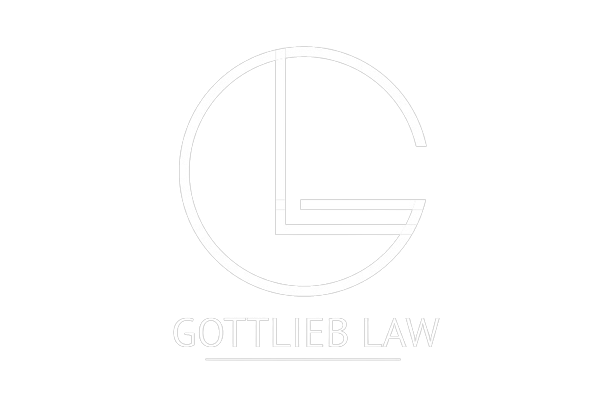The quit claim deed, known for its straightforward approach to transferring property rights without warranties on the title, plays a significant role in real estate transactions. Despite its apparent simplicity, it’s essential to recognize the potential misconceptions and challenges that can arise. In Arizona, with its distinct property laws, gaining a clear understanding of quit claim deeds is vital for property owners and those involved in real estate transactions, ensuring they are well-informed and prepared for the intricacies of property transactions.
Understanding Quit Claim Deeds: A Closer Look
A quit claim deed functions as a restricted assurance in the property sphere, enabling the conveyance of a person’s interest in real estate to another without confirming the title’s cleanliness from claims or liens. This stands in contrast to the more safeguarded warranty deed, which provides comprehensive assurances about the property’s title. Essentially, a quit claim deed transfers any ownership the grantor may hold, yet it stops short of guaranteeing that the property is entirely free of other parties’ rights or interests.
Quit claim deeds have a versatility and purpose in real estate transactions. They’re the go-to tool for a variety of property ownership transfers, offering a straightforward path where complexity often reigns. Below, we explore the multifaceted roles these deeds play:
- Easing Property into Trusts: Imagine you’ve decided to safeguard your estate by placing your home into a living trust. A quit claim deed can serve as the bridge, smoothly transitioning your treasured homestead into the protective arms of the trust, ensuring your legacy is preserved exactly as you envision (although a special warranty deed is also used for this purpose).
- Redefining Ownership Post-Divorce: In the event of a marriage ending, quit claim deeds serve as a practical tool for dividing jointly held property. They allow for the smooth transition of a home’s ownership from both partners to one, effectively converting a shared asset into an individual’s sanctuary for the future.
- Untangling Co-Ownership Complexities: Quit claim deeds act as a tool to clarify the sometimes ambiguous aspects of co-ownership. They are used to define ownership stakes clearly, whether among friends who have pooled resources for a common investment or family members managing inherited property. By delineating precise ownership shares, quit claim deeds bring resolution and harmony to collective ownership arrangements.
- Simplifying Succession in Heirship: During the sensitive process of transferring property across generations, quit claim deeds facilitate the smooth passage of ownership rights to heirs. This method respects the wishes of the deceased, ensuring that the property seamlessly transitions to its new steward within the family, maintaining the legacy with dignity.
- Shifting Sands of Property Rights: As the dynamics of property ownership evolve, a quit claim deed allows for the fluid transfer of one owner’s interest to another. It’s the mechanism that adjusts the ownership shares among partners, responding to the changing needs of personal and business relationships.
- Modulating Your Ownership Stake: Whether it’s gifting a portion of your property to a loved one or selling a part of your estate, quit claim deeds provide the flexibility to adjust your stake in a property. They cater to the generous heart and the strategic mind alike, enabling transfers that range from complete giveaways to calculated reassignments.
- Transforming Title Holding: Life’s changes often call for a new way of holding property titles. From shifting from joint tenancy to tenants in common, or vice versa, quit claim deeds facilitate these transitions, ensuring that the title reflects the current realities of ownership and relationship dynamics.
- Adjusting Historical Records: Despite meticulous planning, inaccuracies in property documentation can occur. Quit claim deeds provide a mechanism to address and correct such discrepancies in earlier recorded deeds, aligning the official records with the actual intentions behind past property transactions.
Within the complex weave of property dealings, quit claim deeds serve as essential strands enabling swift and accurate modifications to ownership structures. They demonstrate that straightforward instruments can address intricate challenges effectively. Yet, the simplicity of their application should not overshadow the importance of meticulous scrutiny and legal representation provided by real estate lawyers to thoroughly understand the potential consequences before filing.
Arizona Quit Claim Deed Requirements
Navigating the realm of quit claim deeds in Arizona presents a unique set of challenges and requirements, reflecting the state’s distinct legal environment. Understanding these nuances is crucial for anyone looking to utilize this tool for property transactions within the Grand Canyon State.
The effectiveness of a quit claim deed hinges on several mandatory elements that go beyond the basics. First and foremost, a proper legal description of the property is required. This isn’t just an address; it’s a detailed description that often includes lot numbers, boundary descriptions, and other legal identifiers that ensure the property is precisely identified.
Completing the Quit Claim Deed
Notarization is an essential step in the process. The individual passing on the property rights (known as the grantor) is required to execute the deed under the watchful eye of a notary public. This step verifies the identity of the signatory and confirms that the signature was made willingly and under no duress.
The final step of this procedure involves recording the deed at the local county recorder’s office, where the property resides. By entering the deed into public records, it becomes an official document, signaling to all the transfer of property ownership. Recording fees must be paid, and the deed must comply with Arizona’s specific formatting requirements, such as font size, paper size, and margin specifications.
For example, the document requires the identification of both the grantor and grantee (the individual relinquishing property rights and the recipient), in addition to the previously mentioned detailed legal description of the property. It’s also customary that the deed will state that it is for “$10 and other valuable considerations.”
Proceed Diligently Though
While the process of using a quit claim deed in Arizona might seem straightforward, especially with the right form in hand, it’s fraught with potential pitfalls. The simplicity of a quit claim deed belies the complexity of its implications and the necessity of getting every detail right. From ensuring the accuracy of the property description to understanding the legal impact of the transfer, the stakes are high.
As we pivot to explore the potential risks and repercussions of utilizing quit claim deeds, keep in mind that these legal instruments, while powerful and useful, carry with them a need for caution and due diligence. Missteps in the process can lead to significant legal and financial complications, underscoring the importance of approaching these transactions with a comprehensive understanding and, ideally, with the guidance of experienced legal counsel.
Know The Potential Repercussions of a Quit Claim Deed
Quit claim deeds, for all their straightforwardness, come with a significant caveat: they offer no assurances regarding the title of the property. This means that when someone receives a property via a quit claim deed, they’re accepting it “as-is” — without any guarantee that the grantor (the person transferring the property) has a clear and unencumbered title, or, in some cases, any right to the property at all. The recipient of a quit claim deed essentially inherits all the risks associated with the property’s title, including any hidden liens, disputes, or encumbrances that might surface later.
Moreover, it’s crucial to understand that quit claim deeds are not revocable once executed. This irrevocability underscores the necessity of ensuring that every detail on the deed is accurate and that both parties fully comprehend the implications of the transfer before the document is submitted for recording. An error, misunderstanding, or oversight can lead to complex legal challenges that can be difficult, if not impossible, to rectify after the fact.
The Absence of Title Assurance
A distinguishing — and often misunderstood — aspect of quit claim deeds is their lack of title assurance. In contrast to warranty deeds that assure the grantor’s clear ownership of the property, quit claim deeds offer no assurances regarding the status of the property’s title. This absence of assurance means the grantee might be left vulnerable to title issues, ranging from unresolved claims to outright fraud. It’s a stark reminder of the deed’s limitations and the potential financial and legal jeopardy for the unwary.
The Mortgage Misconception
A common misconception surrounding quit claim deeds involves mortgages. Many assume that transferring property ownership through a quit claim deed also transfers the responsibility for any existing mortgage on the property. This is not the case. The original mortgage holder remains liable for the debt, regardless of the property’s transfer. This misunderstanding can lead to financial distress and legal complications, particularly if the grantee was under the impression they were assuming responsibility for the mortgage.
Quit Claim Deed Loopholes: A Legal Perspective
While quit claim deeds might seem like a cost-effective solution for property transfer, the “savings” can be illusory. The DIY approach, tempting for its apparent simplicity and cost savings, is riddled with potential legal snares — from incomplete transfers that fail to convey all intended rights to disputes over property boundaries that can embroil the property in litigation. These “loopholes” are not so much features of the deed itself but pitfalls of a process misunderstood or improperly executed.
The Imperative for Legal Representation
This complex landscape serves as a potent reminder of the importance of having experienced legal representation. A seasoned real estate attorney can provide invaluable guidance, ensuring that the quit claim deed accurately reflects the intentions of all parties involved and addresses potential legal issues before they arise. Legal expertise can navigate the intricacies of property law, safeguarding against the pitfalls of quit claim deeds and ensuring that the transfer process is conducted with due diligence and legal foresight.
In sum, while quit claim deeds offer a mechanism for property transfer with less formality, they demand careful consideration and a thorough understanding of their implications. The guidance of a knowledgeable real estate lawyer is not just an advantage; it’s a necessity for anyone looking to use this tool effectively and securely.
The Crucial Difference: Quit Claim Deeds vs. Quiet Title Action
Quit claim deeds and quiet title actions serve different purposes in the realm of real estate, each with its own set of procedures, implications, and outcomes. Grasping these distinctions is crucial for participants in property dealings, particularly in situations where the certainty of the property title is under scrutiny.
Quit Claim Deeds: The Quick Pass of Interest
Quit claim deeds are often perceived as a straightforward method for transferring property rights. They are the legal equivalent of saying, “I transfer to you any interest I might have in this property, but I’m not making any promises about what that interest is or whether the title is clear.” This simplicity can be appealing, particularly in transactions where speed and simplicity are prioritized over guarantees.
However, the lack of assurances with quit claim deeds means that any underlying issues with the property’s title remain with the property. The grantee receives exactly what the grantor had — no more, no less — which may include hidden liens, disputes, or other encumbrances.
Quiet Title Action: Clearing the Clouds
In contrast, a quiet title action is a legal proceeding initiated to resolve ambiguities, claims, or conflicts over the ownership of a property. This process is about establishing a party’s right to ownership of the property free from any other claims. A quiet title action can address various issues, including errors in public records, disputes over property boundaries, claims by previous owners, or other liens against the property.
A quiet title action seeks to “quiet” any challenges or claims to the property, thereby providing a clear title to the owner. This is a critical step in transactions where the ownership of the property is in dispute or when a property owner needs to eliminate any liens or other encumbrances affecting their title.
Comparing Quit Claim Deeds and Quiet Title Action
A quit claim deed serves as a means to convey interest in real estate, whereas a quiet title action involves legal proceedings to settle ownership disputes regarding a property. The former is a non-judicial act that changes the ownership record but does not affect the underlying title issues, whereas the latter is a judicial process that can legally clear the title of unwanted claims.
A primary difference lies in their use and result: quit claim deeds are typically employed in transfers among familiar parties prepared to take on the risks due to the absence of warranties. On the other hand, a quiet title action is typically pursued when there’s a need to clarify and officially settle the status of a property’s title, often involving legal disputes or to prepare a property for sale to a third party who requires a clear title.
Transitioning from One to Another
In some cases, property owners might initially transfer property using a quit claim deed, only to find that unresolved title issues necessitate a quiet title action later on. This scenario underscores the importance of thorough due diligence before any property transaction and highlights how quit claim deeds and quiet title actions can sometimes be sequential steps in the journey to clear property ownership.
The paths of quit claim deeds and quiet title actions diverge significantly in their approach to handling property rights and title issues. For property owners navigating Arizona’s real estate landscape, understanding these differences is crucial. While quit claim deeds offer a quick and simple way to transfer property rights, they come with no guarantees about those rights. Quiet title actions, although more complex and time-consuming, provide a definitive resolution to disputes over property ownership, ensuring a clear title.
For individuals maneuvering through the intricacies of property dealings in Arizona, the expertise of seasoned legal professionals is indispensable. Whether considering a quit claim deed or embarking on a quiet title action, professional advice can steer you through the intricacies of real estate law, ensuring your property rights are secure and your investments are protected.
Navigating Arizona Real Estate: The Critical Role of Experienced Lawyers
In the intricate dance of Arizona real estate, quit claim deeds play a pivotal role, embodying both simplicity and complexity in property transactions. These legal instruments, while straightforward in concept, carry nuanced implications that can significantly impact ownership rights and responsibilities. The distinction between quit claim deeds and quiet title actions further complicates the landscape, requiring a deep understanding of legal procedures to navigate successfully. This complexity underscores the importance of professional legal advice to prevent the pitfalls that can accompany property transfers, ensuring that every transaction is handled with precision and care.
At Gottlieb Law, we are experienced in guiding our clients through the complexities of real estate issues, from quiet title actions to quit claim deeds and beyond. Our experience in Arizona real estate law means that we’re not just attorneys; we’re your partners in navigating the legal intricacies of property transfers and transactions. Whether you’re facing a straightforward quit claim deed transfer or the more complex process of clearing a title, partnering with Gottlieb Law assures that your real estate matters are in capable hands, protecting your interests every step of the way. Call us today at 602-899-8188 or schedule an initial consultation using the contact us page of our site here.




